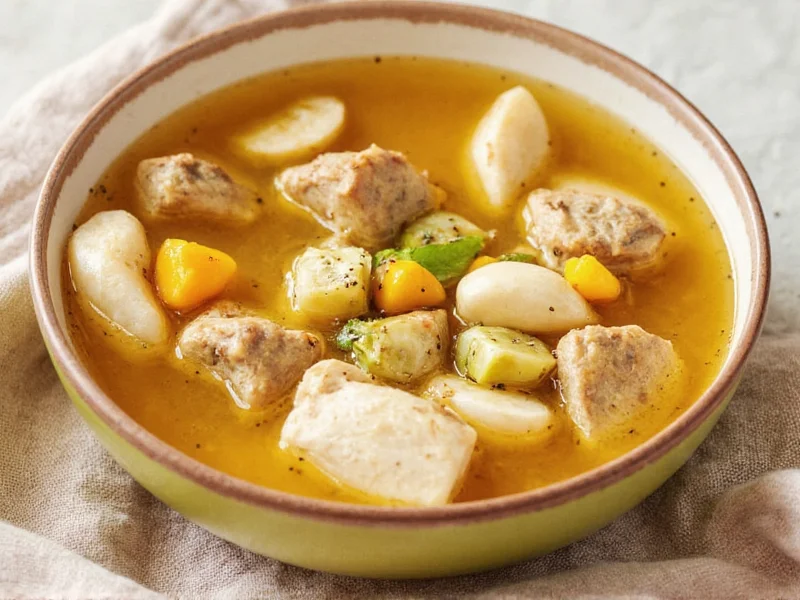Chicken soup represents comfort in a bowl, but the right spices transform it from ordinary to extraordinary. Understanding which spices complement chicken broth requires knowledge of flavor profiles and cooking chemistry. This guide reveals not just what spices to add to chicken soup, but why they work, how much to use, and when to incorporate them for maximum flavor impact.
Essential Spices for Classic Chicken Soup
Every great chicken soup starts with a foundation of key spices that enhance rather than dominate. These work synergistically with the natural flavors of chicken and vegetables:
- Bay leaves - Add one dried leaf per pot; remove before serving. They provide subtle depth without overpowering
- Fresh thyme - Use 3-4 sprigs or 1 teaspoon dried. Thyme's earthy notes complement chicken beautifully
- Black pepper - Freshly cracked delivers superior flavor; add early for mellow heat
- Parsley stems - Often discarded, these contain concentrated flavor; add with aromatics
- Garlic - 2-3 cloves, smashed; adds savory depth without sharpness when cooked properly
- Celery seed - 1/4 teaspoon enhances vegetable notes where fresh celery might get lost
These spices form what culinary professionals call the "soup trinity"—a balanced foundation that supports rather than competes with your main ingredients. When preparing homemade chicken soup, add hardy spices like bay leaves and thyme at the beginning of cooking to allow their flavors to infuse the broth gradually.
Regional Variations and Specialty Blends
Different culinary traditions approach chicken soup with distinctive spice profiles. Understanding these variations helps you create authentic flavors for specific cultural dishes:
| Cuisine Style | Signature Spices | Special Techniques |
|---|---|---|
| Traditional American | Bay leaf, thyme, parsley, celery seed | Add herbs at beginning; finish with fresh parsley |
| Jewish Chicken Soup | Fresh dill, turmeric, black pepper | Add dill near end; turmeric for golden color |
| Asian-Inspired | Ginger, star anise, white pepper | Simmer ginger whole; add star anise early |
| Mediterranean | Rosemary, oregano, lemon zest | Add rosemary early; lemon zest at end |
For authentic Jewish chicken soup, many chefs recommend adding a pinch of turmeric not just for color but for its subtle earthiness that complements the chicken. The traditional addition of fresh dill near the end preserves its bright flavor. When exploring what spices to add to chicken soup for flavor complexity, consider how different cultures approach this universal dish.
Spice Combinations That Elevate Chicken Soup
Certain spice pairings create flavor profiles greater than the sum of their parts. These combinations work particularly well in chicken soup:
- Classic Comfort Blend: 2 bay leaves + 1 tsp thyme + 1/2 tsp black pepper + parsley stems. Perfect for traditional chicken noodle soup.
- Golden Turmeric Blend: 1/2 tsp turmeric + 1/4 tsp ginger + pinch of black pepper (enhances turmeric absorption) + fresh dill. Creates vibrant color and anti-inflammatory benefits.
- Mediterranean Brightness: 1 sprig rosemary + lemon zest from half a lemon + 1/2 tsp oregano. Add lemon zest in the last 10 minutes for maximum freshness.
When determining how to season chicken soup properly, remember that dried herbs generally need 20-30 minutes of simmering to fully release their flavors, while fresh herbs work best added in the final 5-10 minutes. This timing difference explains why many professional chefs use both dried and fresh versions of certain herbs in layered approaches.
Spices to Use Sparingly or Avoid
Some spices can easily overpower delicate chicken broth. Understanding which spices complement chicken broth helps prevent common seasoning mistakes:
- Cinnamon - Use only a tiny pinch (1/16 tsp) in Asian variations; too much creates an unbalanced sweet profile
- Cumin - Overpowering in most chicken soups; better suited for tortilla or tomato-based soups
- Red pepper flakes - Add cautiously; 1/8 tsp max for subtle heat without dominating
- Curry powder - Creates a different dish entirely; better for separate curry recipes
Many home cooks make the mistake of adding too much salt early in the cooking process. Instead, wait until the end to adjust salt levels, as reducing the broth concentrates the sodium. When exploring spice combinations for chicken noodle soup, remember that balance is key—each element should support, not compete with, the chicken flavor.
Practical Seasoning Techniques
Mastering when to add spices to chicken soup makes a significant difference in flavor development:
- Hard spices (bay leaves, whole peppercorns, cinnamon sticks) should go in at the beginning to allow slow flavor extraction
- Dried herbs (thyme, oregano, rosemary) benefit from 20-30 minutes of simmering
- Fresh herbs (dill, parsley, cilantro) add maximum impact when stirred in during the last 5-10 minutes
- Aromatic spices (garlic, ginger) work best when sautéed with onions and carrots before adding liquid
Create a spice sachet using cheesecloth for easy removal of whole spices. This technique keeps your soup visually clean while allowing full flavor infusion. For batch cooking, prepare spice blends in advance—measure combinations into small bags for quick addition to your soup pot. This approach ensures consistent seasoning every time you make chicken soup.











 浙公网安备
33010002000092号
浙公网安备
33010002000092号 浙B2-20120091-4
浙B2-20120091-4